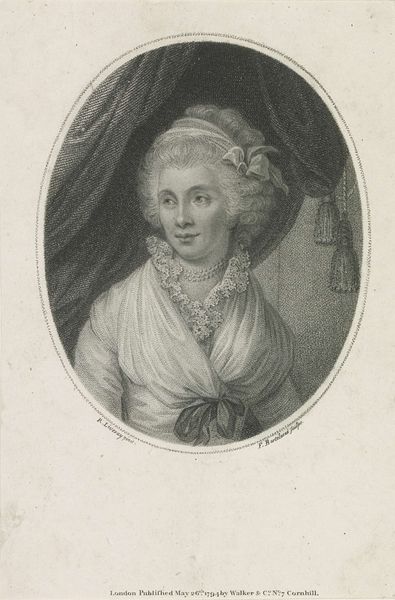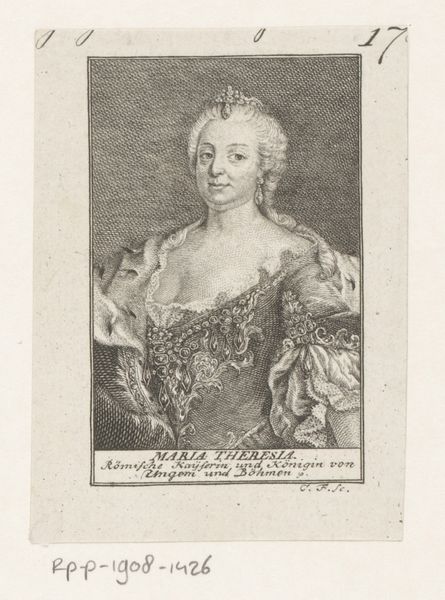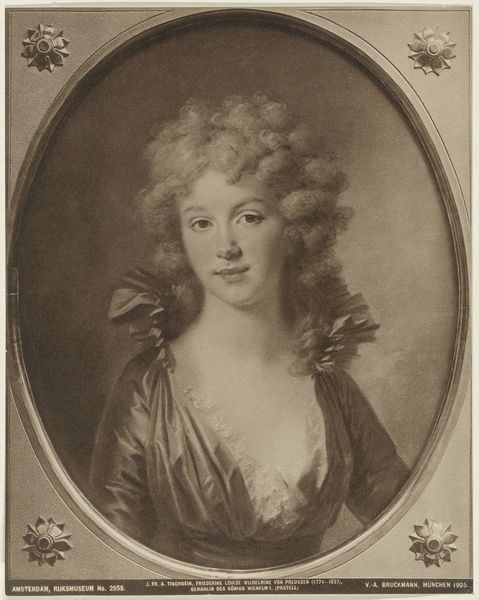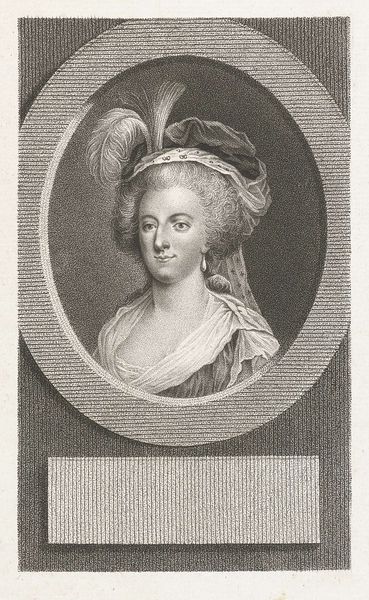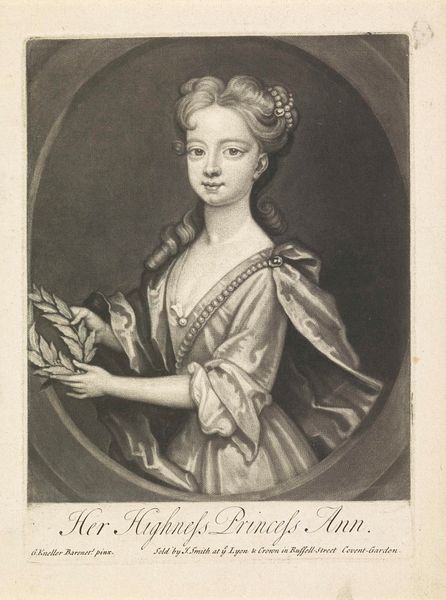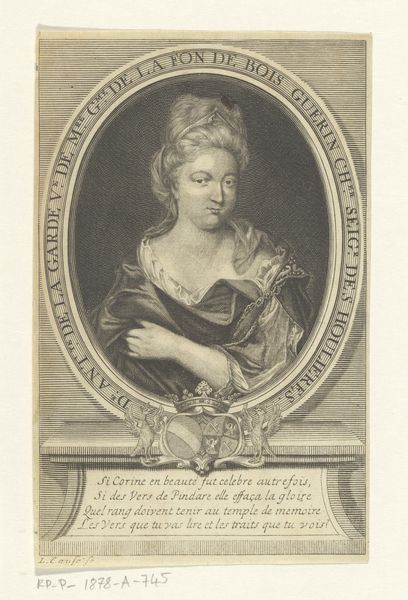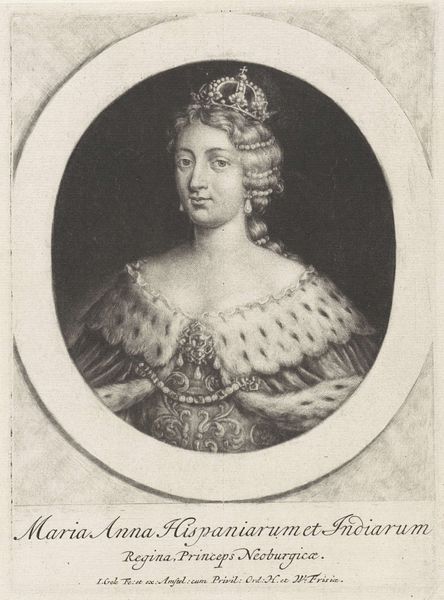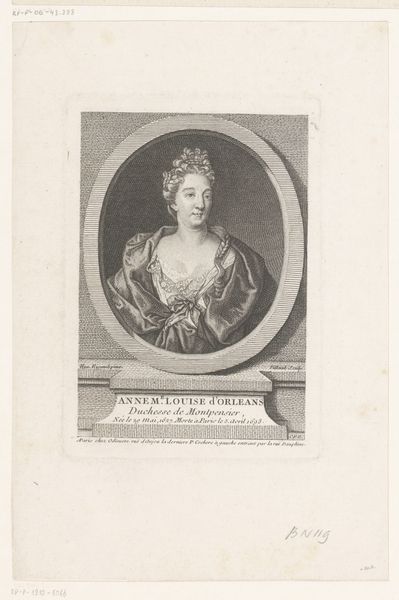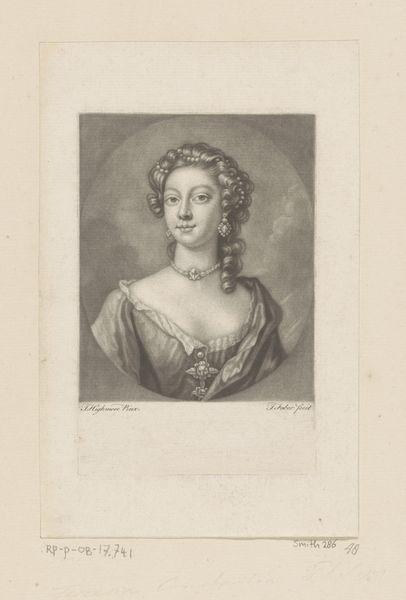
print, engraving
#
portrait
#
neoclacissism
# print
#
15_18th-century
#
engraving
Dimensions: height 95 mm, width 57 mm
Copyright: Rijks Museum: Open Domain
Editor: This is a print, an engraving to be exact, portraying Frederika von Mecklenburg-Strelitz, created sometime between 1788 and 1828 by Eberhard Siegfried Henne. It has a rather simple composition, but what immediately strikes me is the texture created through the engraving. How do you interpret the significance of this technique in understanding the artwork? Curator: I see it as a crucial element. The engraving process, with its repetitive, controlled lines, speaks volumes about the societal forces at play. Consider the labor involved in creating this image: the skilled artisan meticulously transferring an image onto a plate. It moves away from ideas about the singularity of art; we can think about the print trade and mass reproduction, something increasingly significant in the 18th and early 19th centuries. What about the social context of Frederika von Mecklenburg-Strelitz herself? Editor: She was a princess, right? How would her status relate to the material realities of the artwork? Curator: Exactly. Her aristocratic status directly intersects with the production and consumption of this image. Portraits like this weren't just aesthetic objects; they were commodities, circulated among elites to solidify power and status. The engraving makes it reproducible, democratizing the image in a way but still within specific societal parameters. What about the paper itself? Where might it have been made, and by whom? Editor: I hadn't thought about the paper! So, you’re suggesting that every element, from the engraving lines to the paper it's printed on, holds clues to understanding the socio-economic landscape of the time? Curator: Precisely. By focusing on the materials and process, we move beyond a simple appreciation of aesthetics and delve into the complex relationships between art, labor, and social power. Editor: That is a completely different way of looking at art than I am used to, but now it opens up so many additional perspectives to consider! Curator: Indeed. Thinking materially allows us to critically examine how power structures shape what we see and value.
Comments
No comments
Be the first to comment and join the conversation on the ultimate creative platform.
